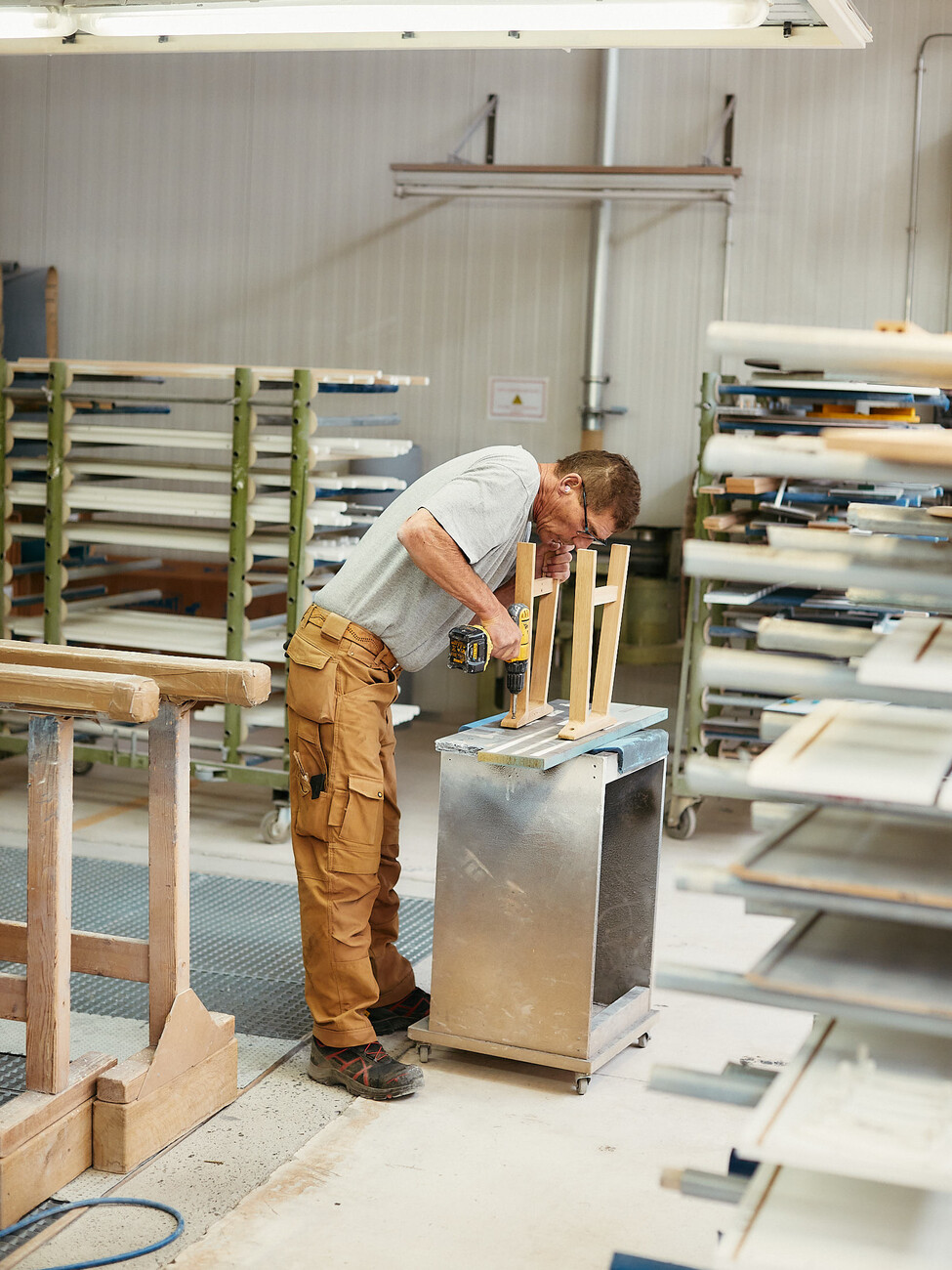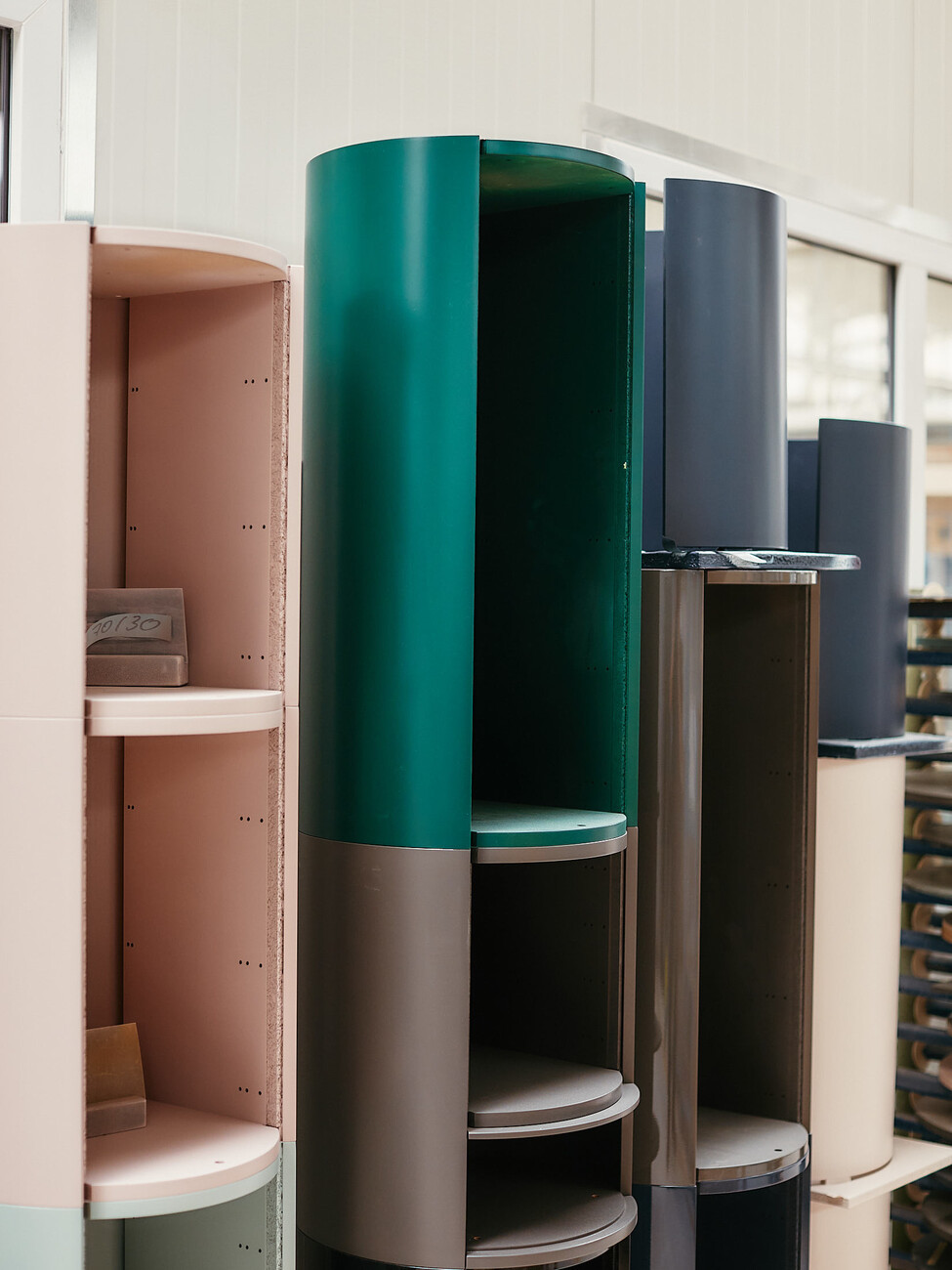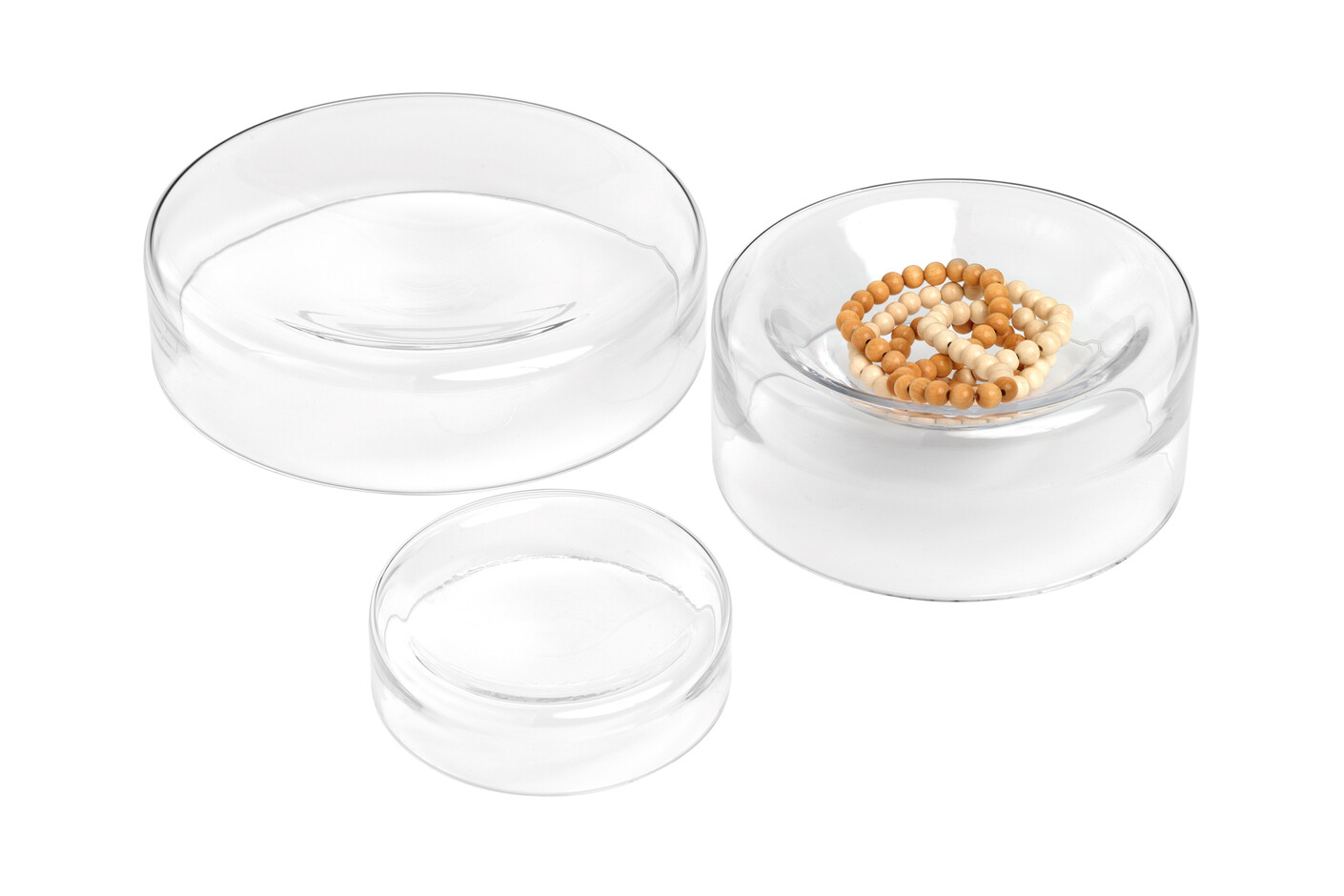Polished beauty
Looking at Schönbuch’s innovative interior products, you could be led to believe the company was founded only recently. That’s how fresh and lively its presentations and the daring interplay of colors it employs. The precision in the craftsmanship, which points to the company’s deep roots, only reveals itself at second glance: With a product range previously specialized on entrance hall furnishings, the brand was taken over by Michael Ress in 2005. While Schönbuch had been a success in its previous incarnation, the dated designs had begun to feel a little stuffy. As Michael Ress recaps: The company was a “sleeping beauty” that simultaneously filled a product niche in which he and creative director Carolin Sangha saw a great deal of potential. Ress already possessed the flair required to lead Schönbuch into a bright future: He manages Ress Möbelwerkstätten, a production partner for high-end furniture brands, and is the sixth-generation family member at its helm. “Having grown up in a family-run company is a great advantage when it comes to product development. You have a realistic view of manufacturing and are able to solve any discrepancies between design freedom and technical implementation faster,” he explains. Together with Carolin Sangha, Michael Ress completely overhauled the creative process at Schönbuch, bringing every aspect of the company, from brand presentation to the selection of designers, up to date: “We wanted to rethink the hallway products and bring together function and pleasure in design.” Products now regarded to be classics in the Schönbuch range, such as the colorful “Dots” wall pegs or the purist wall-mounted coat rack “Line” were among the first newly designed items. Collaborations with designers such as Hanne Willmann, Stefan Diez, Sebastian Herkner, Christian Haas, Verner Panton or Studio Besau-Marguerre followed. Many young designers including Martha Schwindling, Anna-Marin Nilsson, Ilja Huber and Martin Hirth have also left their mark on the Schönbuch portfolio. “We quickly see whether a designer is really able to identify with the brand. If that’s the case, we don’t need big names.” Instead, it’s all about creating something surprising, yet without frills. Something that can be intuitively grasped in terms of function and awakens the desire in people to integrate it into their everyday lives. In short: “simply beautiful” – as the motto of Schönbuch would have it. Color is a central element when it comes to creating a visually exciting object. The brand palette currently comprises 26 tones, some of which – such as royal blue or ruby red – were already included in the Schönbuch range before the mainstream declared them trend shades. “Carolin has a fantastic feel for colors and color combinations” Michael Ress enthuses. This is joined by the two designers’ knack for stand-alone products that may not be essential in terms of furnishing a space, but certainly are able to turn it into a cozy home. Such as the “Guard” bar cabinet by Christian Haas or the wall-mounted “Simetria” cabinet by Studio Besau Marguerre. “We want to get away from a one-size-fits-all look in our products”, as Ress puts it.
Close to life
While design as the face of the product is decisive for Schönbuch, quality workmanship with elaborate details is equally important. “Our products are destined to be accessible and be at their owners’ side for many years,” Ress states. The production in Bad Königshofen contributes to this – the Ress furniture workshops, which produce for Schönbuch as well as other renowned furniture companies, have been established in the region for decades and can rely on a strong network of local craftsmen. Even desired adjustments can be implemented quickly, as is the case with the "Individual" mirror: its dimensions and coloring may be freely selected. The close bond with craft is immediately noticeable when visiting the production halls. Wood smells waft through the workshop as saws screech. You can hear the sandpaper dragging over the edges and look over the carpenter’s shoulder as he works. If a material other than wood is required Schönbuch cooperates with manufactories specialized in the respective field, be it hand-blown glass from the Czech Republic, handcrafted ceramics from Portugal or fine porcelain from Thuringia. Sustainability is an important concern for Michael Ress, and so many of the woods are oiled instead of varnished. What’s more, Schönbuch uses water-based lacquers for the colors as far as possible. Recycling is also an issue: dismantling all of the components of a product at the end of its life cycle should be as easy as possible. “We aim to keep to the highest environmental standards”, Ress reveals. The concepts have long outgrown the former entrance hall product niche. “With Schönbuch, we were able to bring an uncut diamond to life and lead it into the future,” adds Michael Ress.











































































































































































